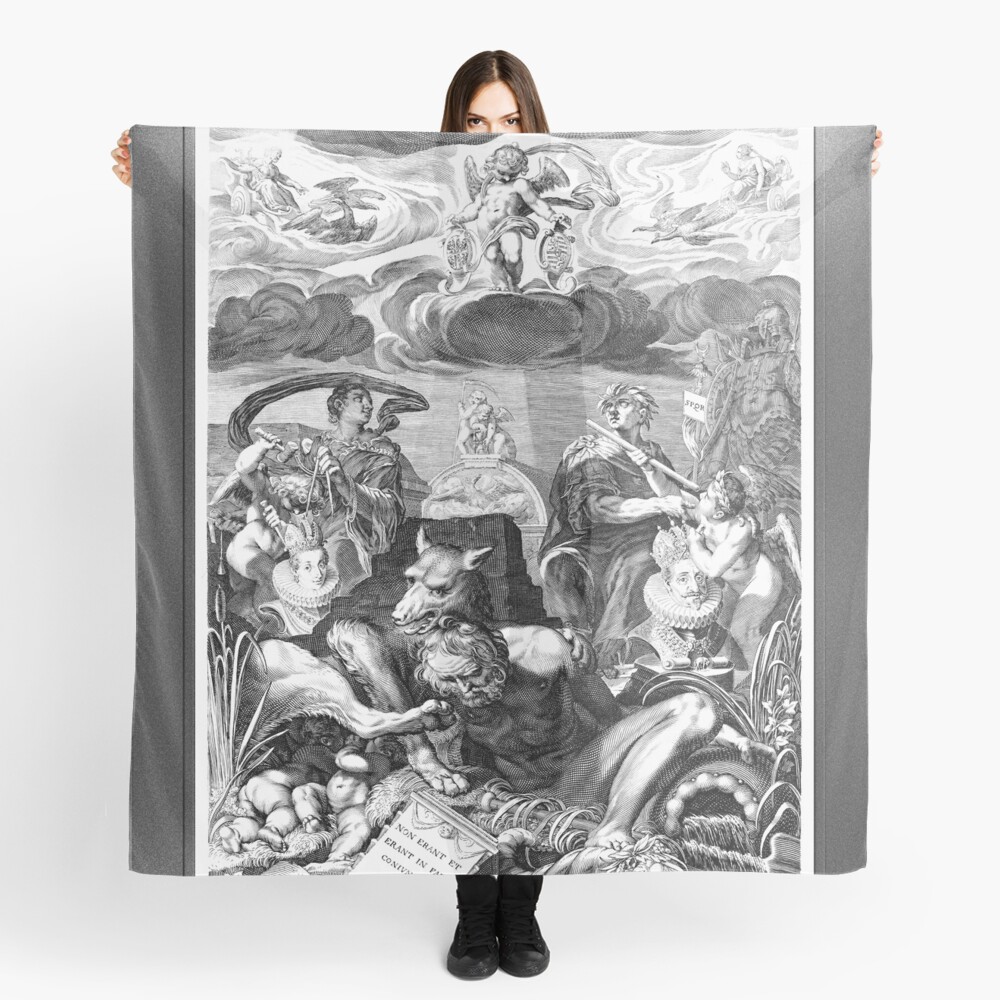
Allegory of the Marriage of Emperor Ferdinand II and Eleanor Gonzaga
Allegory of the Marriage of Emperor Ferdinand II and Eleanor Gonzaga by Flemish Engraver Aegidius Sadeler II (1570 – 1629); the imperial engraver of Rudolf II, Matthias and Ferdinand II.
In this allegorical engraving of the wedding of Emperor Ferdinand II (1578 – 1637) and Eleonora Gonzaga, Princess of Mantua (1598 – 1655) we see the Roman God Jupiter directing a cherub in the sculpting of the crown of Ferdinand II and the Roman Goddess Venus directing a cherub in the sculpting of the crown of Eleanor Gonzaga; and between them are two cherubs, one with a sickle and one with an hourglass.

To the left of Jupiter (the right of the image) is a a Roman suit of Armor with a scepter with the abbreviation SPQR; which stood for Senatus Populusque Romanus or the Senate and the Roman People; which in antiquity signified the entirety of the Roman State.
As both gods look above them, we see another cherub at the center holding the crest of both houses in each hand; while in the upper left sitting in a chariot pulled by swans is probably Vulcan the Roman God of Fire; and on the right sitting in a chariot pulled by swans may be Ceres the Goddess of fertility.
Below Jupiter and Venus is the Roman God Mars with the she-wolf Lupa that is embracing him while Romulus and Remus (the mythical founders of Rome) suckle on the tits of the she-wolf for sustenance.
This is a remastered digital art old masters reproduction of a public domain image that is available as a tapoleni lolomi i luga ole laiga.
Information Below Derived From Wikipedia.org
Aegidius was part of the Sadeler family, which were the largest and probably the most successful of the Flemish engravers of the later 16th and 17th century that became the dominant Northern European printmakers; as both artist and publishers.
He was the son of Emmanuel de Sayeleer and the nephew of Aegidius I, Jan I en Raphael Sadeler; and was trained by his uncle Jan I; becoming a member of the Antwerp Guild of St. Luke in 1589.
He worked in Munich, Germany from about 1590 ia 1593, then in Rome, Italy from 1593 ia 1594 and then back to Munich from 1594 – 1597.
I totonu 1597 he moved to Prague, Czech Republic where he decided to settle and became the imperial engraver to Rudolf II (1552 – 1612); and made paintings of the aristocracy as well as engravings of artwork from Bartholomeus Spranger (1546 – 1611), Roelant Savery (1576 – 1639), Hans von Aachen (1552 – 1615), Giuseppe Arcimboldo (1527 – 1593), and sculptures by Giambologna (1529 – 1608) and Adriaen de Vries (1556 – 1626).
After the passing of Rudolf II, he would serve as the imperial engraver under both Emperors Matthias (1557 – 1619) and Ferdinand II (1578 – 1637).



